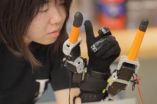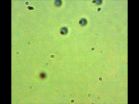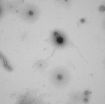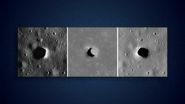Bowel cancer breakthrough may benefit thousands of patients
2014-07-18
(Press-News.org) Researchers at Queen's University have made a significant breakthrough that may benefit patients with bowel cancer.
Dr Sandra van Schaeybroeck and her team have discovered how two genes cause bowel cancer cells to become resistant to treatments used against the disease. The research, which was funded by Cancer Research UK, was published this month in the prestigious international journal Cell Reports.
The activity of the two genes, called MEK and MET, was uncovered when the researchers looked at all the different pathways and interactions taking place in bowel cancer cells.
Dr van Schaeybroeck and her group found that these bowel cancers switch on a survival mechanism when they are treated with drugs that target faulty MEK genes. But when the researchers added drugs that also block the MET gene, the bowel cancer cells died.
The team are now testing a new approach to target these two genes in the most aggressive forms of bowel cancer in a European Commission funded clinical trial that is being led by Dr van Schaeybroeck.
Currently over 40,000 people are diagnosed with bowel cancer in the UK each year and over 16,000 patients die of the disease. More than half of patients develop the aggressive form of the disease which does not respond to standard therapy, the five year overall survival in this patient group is less than five per cent.
Study author Dr Sandra van Schaeybroeck, from the Centre for Cancer Research and Cell Biology (CCRCB) at Queen's University, said: "We have discovered how two key genes contribute to aggressive bowel cancer. Understanding how they are involved in development of the disease has also primed the development of a potential new treatment approach for this disease."
Queen's University Vice-Chancellor, Professor Patrick Johnston, said: "Understanding the genes that cause bowel cancer is a key focus of our research. Our discoveries in this deadly disease have identified a new route to clinical application for cancer patients."
Professor David Waugh, Director of the CCRCB at Queen's, said: "The publication of this research by Dr van Schaeybroeck and her team demonstrates our commitment to performing excellent science here in Belfast that can be directly translated to the clinic."
The clinical trial, which is called MErCuRIC and is due to start in September, will deliver personalised medicine to Northern Irish patients and patients from other European countries. Overall, the pan European collaborative effort will involving 13 research/clinical teams from nine European countries.
INFORMATION:
Media inquiries to Claire O'Callaghan, Queen's University Communications Office, Tel: +44 (0)28 9097 3087 email: c.ocallaghan@qub.ac.uk
Notes to Editors:
• Dr Sandra van Schaeybroeck is available for interview. Interview bids to Queen's Communications Office.
• To view the full research paper visit http://www.cell.com/cell-reports/abstract/S2211-1247(14)00426-4
• The MErCuRIC clinical trial is supported with 6 million euro grant by the European Commission to a European Consortium led by Queen's University Belfast. This clinical trial will deliver personalised medicine to Northern Irish patients and patients from other European countries. Overall, this pan European collaborative effort involving 13 research/clinical teams from 9 European countries.
ELSE PRESS RELEASES FROM THIS DATE:
Scientists enlist big data to guide conservation efforts
2014-07-18
Despite a deluge of new information about the diversity and distribution of plants and animals around the globe, "big data" has yet to make a mark on conservation efforts to preserve the planet's biodiversity. But that may soon change.
A new model developed by University of California, Berkeley, biologist Brent Mishler and his colleagues in Australia leverages this growing mass of data – much of it from newly digitized museum collections – to help pinpoint the best areas to set aside as preserves and to help biologists understand the evolutionary history of life on Earth. ...
A new measure of biodiversity
2014-07-18
A new approach to measuring biodiversity has uncovered some biologically important but currently unprotected areas in Western Australia, while confirming the significance of the world heritage listed Wet Tropics rainforests in the country's north-east.
In a paper published yesterday (Friday 18 July) in Nature Communications, scientists from CSIRO, University of California, University of Canberra, the Australian Tropical Herbarium at James Cook University and University of New South Wales applied the new method to Australia's iconic Acacia.
The genus Acacia includes ...
Getting a grip on robotic grasp
2014-07-18
CAMBRIDGE, MA -- Twisting a screwdriver, removing a bottle cap, and peeling a banana are just a few simple tasks that are tricky to pull off single-handedly. Now a new wrist-mounted robot can provide a helping hand — or rather, fingers.
Researchers at MIT have developed a robot that enhances the grasping motion of the human hand. The device, worn around one's wrist, works essentially like two extra fingers adjacent to the pinky and thumb. A novel control algorithm enables it to move in sync with the wearer's fingers to grasp objects of various shapes and sizes. Wearing ...
Biomarker discovery may lead to new HIV treatment
2014-07-18
Further analysis of a Phase II study of therapeutic HIV vaccine candidate Vacc-4x revealed a potential biomarker associated with participants who experienced a more profound viral load reduction after receiving the vaccine. The results of this exploratory, ad hoc, subset analysis by St George's, University of London and Bionor Pharma were announced today at the AIDS 2014 Conference in Melbourne, Australia.
If confirmed, the biomarker may be able to predict which patients will benefit most from the therapeutic HIV vaccine candidate Vacc-4x, which is being developed by ...
'Nanocamera' takes pictures at distances smaller than light's own wavelength
2014-07-17
VIDEO:
This is a video demonstrating scanning-stage-based exposure, whereby programmed
motion of a microscope stage is used to write the University's "Block I " logo into the plasmonic film. Each bar in the...
Click here for more information.
Researchers at the University of Illinois at Urbana-Champaign have demonstrated that an array of novel gold, pillar-bowtie nanoantennas (pBNAs) can be used like traditional photographic film to record light for distances that ...
Tiniest catch: University of Arizona scientists' fishing expedition reveals viral diversity in the sea
2014-07-17
A fishing expedition of microscopic proportions led by University of Arizona ecologists revealed that the lines between virus types in nature are less blurred than previously thought.
Using lab-cultured bacteria as "bait," a team of scientists led by Matthew Sullivan has sequenced complete and partial genomes of about 10 million viruses from an ocean water sample in a single experiment.
The study, published online on July 14 by the journal Nature, revealed that the genomes of viruses in natural ecosystems fall into more distinct categories than previously thought. This ...
Lunar pits could shelter astronauts, reveal details of how 'man in the moon' formed
2014-07-17
VIDEO:
This video shows images from NASA's LRO spacecraft of various lunar pits.
Click here for more information.
While the moon's surface is battered by millions of craters, it also has over 200 holes – steep-walled pits that in some cases might lead to caves that future astronauts could explore and use for shelter, according to new observations from NASA's Lunar Reconnaissance Orbiter (LRO) spacecraft.
The pits range in size from about 5 meters (~5 yards) across to more than ...
Older adults who walk out of necessity are at highest risk for outdoor falls
2014-07-17
Older adults are at a greater danger of falling when walking for utilitarian purposes such as shopping and appointments than when walking for recreation, according to a study from UMass Medical School.
"Older adults have two times the risk of falling while walking out of necessity than walking for recreation, and four times greater risk of injury from a fall on a sidewalk than in a recreational area," said Wenjun Li, PhD, associate professor of medicine in the Division of Preventive and Behavioral Health at UMMS and lead author of the study "Utilitarian Walking, Neighborhood ...
Estimating earthquake frequency and patterns in the Puget Lowland
2014-07-17
Boulder, Colo. - The hazard posed by large earthquakes is difficult to estimate because they often occur hundreds to thousands of years apart. Because written records for the Puget Lowland of northwestern Washington cover less than 170 years, the size and frequency of the largest and oldest earthquakes on the Seattle and Tacoma faults are unknown. Past earthquakes can only be estimated through geologic studies of sediments and landforms that are created when faults break the ground surface.
Along the Cascadia margin, the cities of Seattle and Tacoma occupy the Puget ...
Discovery may make it easier to develop life-saving stem cells
2014-07-17
Not unlike looking for the proverbial needle in a haystack, a team of Michigan State University researchers have found a gene that could be key to the development of stem cells – cells that can potentially save millions of lives by morphing into practically any cell in the body.
The gene, known as ASF1A, was not discovered by the team. However, it is at least one of the genes responsible for the mechanism of cellular reprogramming, a phenomenon that can turn one cell type into another, which is key to the making of stem cells.
In a paper published in the journal Science, ...





